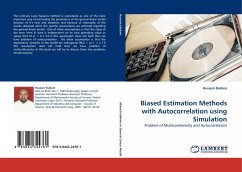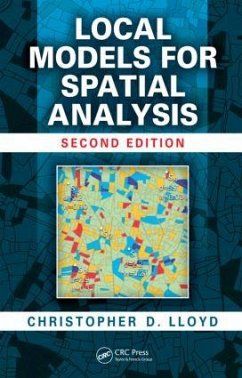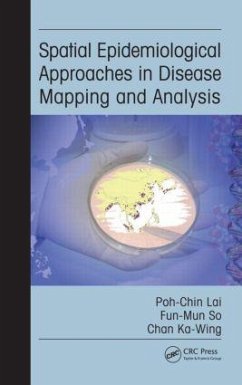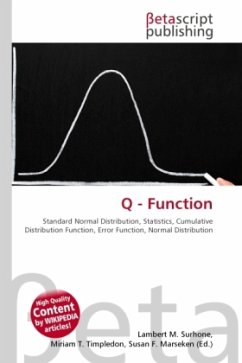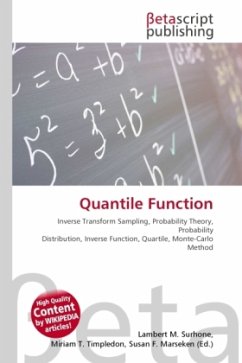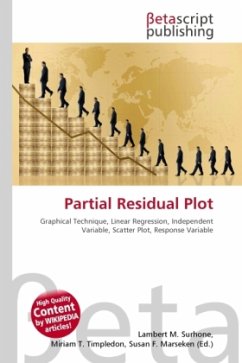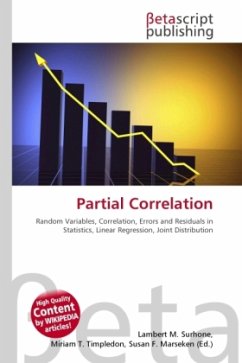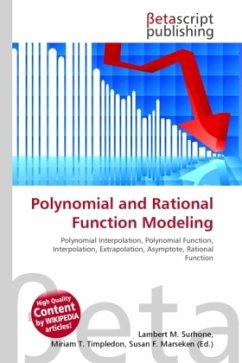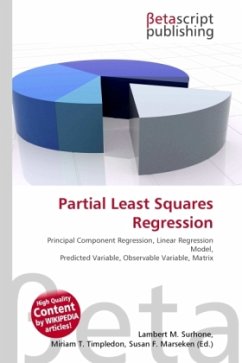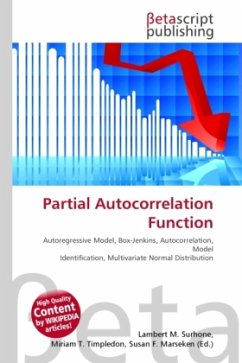
Partial Autocorrelation Function
Versandkostenfrei!
Versandfertig in 6-10 Tagen
26,99 €
inkl. MwSt.

PAYBACK Punkte
13 °P sammeln!
High Quality Content by WIKIPEDIA articles! In time series analysis, the partial autocorrelation function (PACF) plays an important role in data analyses aimed at identifying the extent of the lag in an autoregressive model. The use of this function was introduced as part of the Box-Jenkins approach to time series modelling, where by plotting the partial autocorrelative functions one could determine the appropriate lags p in an AR(p) model or in an extended ARIMA(p,d,q) model. Given a time series zt, the partial autocorrelation of lag k is the autocorrelation between zt and zt + k with the lin...
High Quality Content by WIKIPEDIA articles! In time series analysis, the partial autocorrelation function (PACF) plays an important role in data analyses aimed at identifying the extent of the lag in an autoregressive model. The use of this function was introduced as part of the Box-Jenkins approach to time series modelling, where by plotting the partial autocorrelative functions one could determine the appropriate lags p in an AR(p) model or in an extended ARIMA(p,d,q) model. Given a time series zt, the partial autocorrelation of lag k is the autocorrelation between zt and zt + k with the linear dependence of zt + 1 through to zt + k ? 1 removed; equivalently, it is the autocorrelation between zt and zt ? k that is not accounted for by lags 1 to k-1, inclusive. There are algorithms, not discussed here, for estimating the partial autocorrelation based on the sample autocorrelations. See (Box, Jenkins, and Reinsel 1970) or (Brockwell, 1991) for the mathematical details. These algorithms derive from the exact theoretical relation between the partial autocorrelation function and the autocorrelation function.



